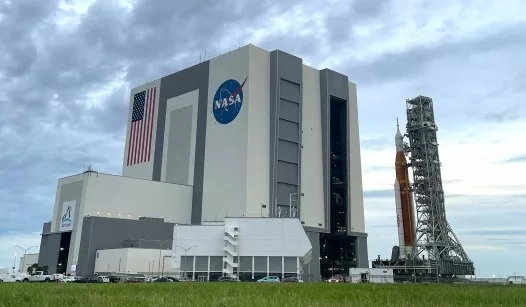The challenges facing NASA today extend beyond bureaucratic hurdles; they reflect a deeper cultural pessimism about the future of government-funded exploration and innovation. As the agency grapples with budget constraints, shifting political priorities, and a growing skepticism about the feasibility of ambitious space missions, the optimism that once fueled its groundbreaking achievements seems to be waning.
In recent years, NASA has faced a series of setbacks and delays, particularly in its flagship programs aimed at returning humans to the Moon and eventually sending astronauts to Mars. These delays have sparked frustration among scientists, engineers, and the general public, who have watched as the agency struggles to maintain its once-stellar reputation. The ambitious Artemis program, designed to land “the first woman and the next man” on the Moon by the mid-2020s, has encountered significant technical and funding challenges, pushing back timelines and raising questions about its viability.
Moreover, the political landscape surrounding NASA has become increasingly polarized. While some lawmakers advocate for robust funding and support for space exploration, others prioritize immediate domestic concerns, arguing that resources should be allocated to pressing issues on Earth rather than ambitious space endeavors. This political tug-of-war not only complicates NASA’s funding but also contributes to an overarching sense of uncertainty about the agency’s future.
Public sentiment plays a crucial role in shaping the trajectory of NASA’s initiatives. In an era marked by rapid technological advancements and shifting priorities, many Americans are beginning to question the value of investing in space exploration. The cultural narrative surrounding innovation has shifted, with a growing number of people expressing skepticism about the returns on investment for taxpayer dollars spent on space programs. This cultural pessimism can be attributed to various factors, including economic challenges, environmental concerns, and a sense of disillusionment with government institutions.
Despite these challenges, there remains a dedicated community of scientists, engineers, and advocates who continue to champion the importance of space exploration. They argue that investments in NASA not only drive technological advancements but also inspire future generations to pursue careers in science, technology, engineering, and mathematics (STEM). The benefits of space exploration extend beyond the cosmos; they have led to innovations that improve life on Earth, from advancements in telecommunications to breakthroughs in medicine.
To rekindle public interest and support for NASA, it is crucial to communicate the agency’s achievements and potential more effectively. Highlighting successful missions, such as the Mars rover Perseverance and the James Webb Space Telescope, can help shift the narrative from one of skepticism to one of inspiration. By showcasing the tangible benefits of space exploration and its role in addressing global challenges, NASA can work to rebuild public trust and enthusiasm for its mission.
Furthermore, fostering collaboration between government agencies, private companies, and international partners can enhance the prospects for successful space initiatives. The rise of commercial spaceflight has opened new avenues for innovation and investment, allowing NASA to leverage the expertise and resources of the private sector. Partnerships with companies like SpaceX and Blue Origin have already demonstrated the potential for cost-effective solutions to complex challenges, paving the way for a new era of exploration.
Ultimately, the future of NASA hinges on a collective effort to overcome cultural pessimism and rally support for its mission. By emphasizing the importance of exploration, innovation, and collaboration, we can inspire a renewed sense of optimism about what lies ahead. As we look to the stars, it is essential to remember that the pursuit of knowledge and discovery is not just about reaching new heights; it is about fostering a spirit of curiosity and resilience that can propel humanity forward, both on Earth and beyond.
